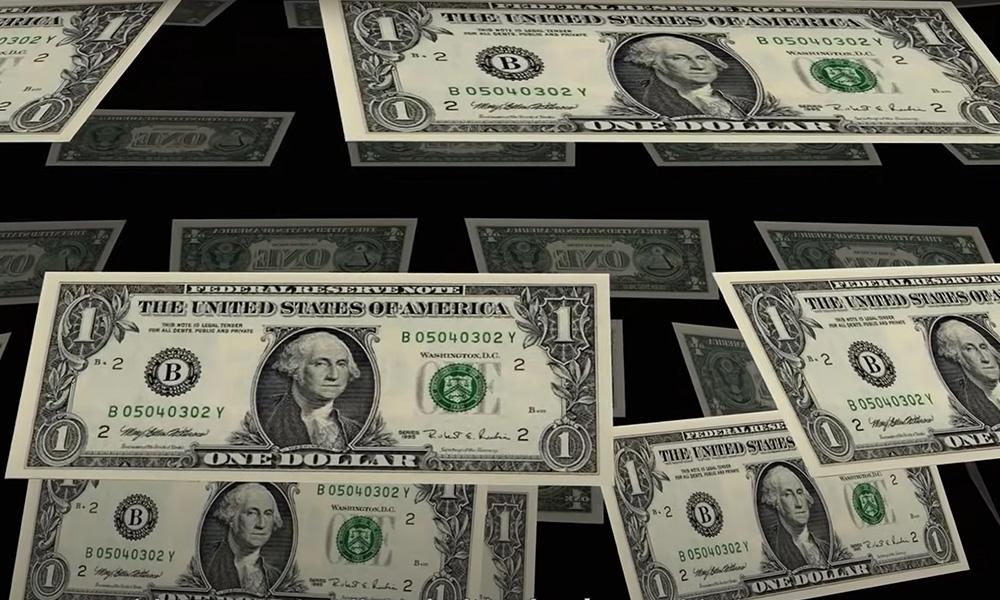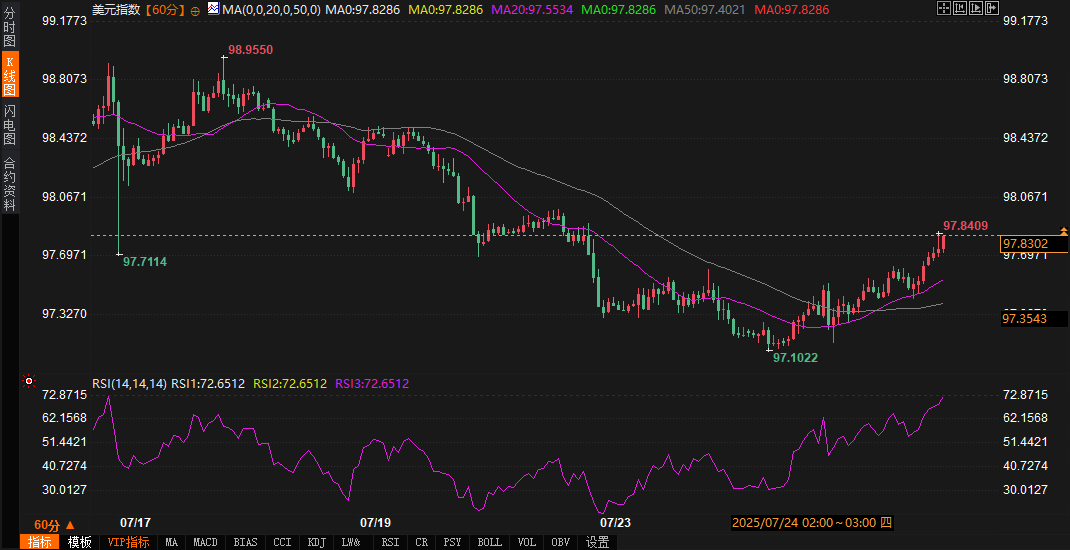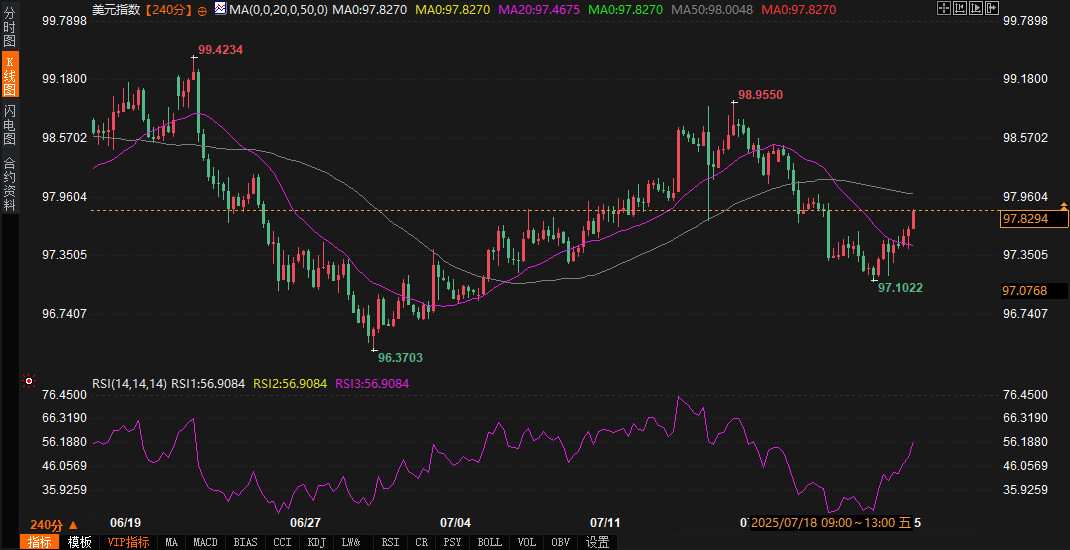The data trust crisis triggered a "multi-cycle rebellion": the ultimate showdown between the overbought alarm of the US dollar index and the short-selling arrangement!
2025-07-25 21:05:33

Fundamental drivers: Two-way risks caused by data quality concerns
The core variable of recent market sentiment stems from the controversy over the credibility of official US economic data. According to a survey of 100 policy experts by a well-known institution, 89% of the respondents expressed concerns about data quality risks, and more than 70% of them believed that the authorities' response measures lacked urgency. Due to layoffs, hiring freezes and other factors, the US Bureau of Labor Statistics has reduced its staff size by 15%, and will stop publishing 350 sub-items of the Producer Price Index (PPI) from next month. This change is impacting the US dollar pricing logic from three dimensions:
Direct impact of data distortion <br/>Economic data is the "dashboard" for the Fed's policy making. Once its accuracy is damaged, it may lead to misjudgment of monetary policy. For example, if inflation data is systematically overestimated, the Fed's policy stance of maintaining high interest rates may increase the risk of economic recession, and ultimately force the policy to turn to easing, suppressing the US dollar index; on the contrary, if employment data underestimates the resilience of the labor market, it may delay necessary policy easing, leading to a temporary overvaluation of the US dollar. The current market's "tolerance threshold" for data has been significantly reduced, and any release that deviates from expectations may trigger a jump in volatility.
Long-term erosion of institutional credibility <br/>The wave of layoffs and budget cuts in the U.S. Bureau of Labor Statistics and other institutions are shaking the market's trust in the "gold standard of data." The former director of the Bureau of Labor Statistics pointed out that staff shortages may lead to "undetected statistical biases," and political forces' concerns about interference in data agencies (such as a survey showing that 66% of experts are concerned that data issues will affect the Fed's decision-making) have further strengthened the dollar's "policy uncertainty premium." Once this trust deficit is formed, even if subsequent data returns to normal, the market may need longer to verify its reliability, extending the valuation repair cycle of the dollar.
Immediate impact of emotional transmission <br/>Even if the data quality problem has not been confirmed, the current concerns of 89% of experts have become a "self-fulfilling prophecy". Traders are adjusting their dollar positions: speculative long positions have fallen for two consecutive weeks, and the implied volatility (IV) of the options market has risen significantly before the data release window. It is worth noting that although Trump's recent tariff remarks and pressure on the Federal Reserve have not directly changed the policy path, they have formed a "resonance effect" with the data confidence crisis, amplifying the short-term volatility elasticity of the US dollar index.
Technical multi-cycle analysis: Divergence between short-term momentum and medium-term trend
60-minute chart: Risk of momentum exhaustion in overbought conditions
From the hourly chart, the price shows a contradictory combination of "golden cross of moving average + overbought RSI":
Moving average system: The 20-period moving average (97.5513) and the 50-period moving average (97.7919) are converging. The golden cross signal of 30EMA crossing 50EMA shows that short-term bulls are dominant, but the price has not been able to effectively break through the 50-period moving average pressure, indicating that there is strong selling pressure at the 97.80 line.
Momentum indicator: The RSI index is at 71.91, which has entered the traditional overbought range (>70), and the price and RSI have formed a "top divergence" - when the price hits a new intraday high, the RSI fails to break through the previous high simultaneously. Historical data shows that after similar patterns appear in the past six months, there is a 60% probability of a callback of at least 30 points within 4 hours.
Key price: The upper resistance focuses on 97.84 (previous intensive trading area) and 98.06 (mid-July high), and the lower support needs to focus on 97.55 (20-period moving average) and 97.40 (this week's low). If data concerns heat up, the price may quickly drop to 97.55 to test the effectiveness of the golden cross; if the sentiment eases, it may maintain a range of 97.60-97.90 in the short term.

240-minute chart: The medium-term downward structure remains unchanged
The 4-hour chart shows typical "short arrangement repair" characteristics, and the medium-term trend is still weak:
Moving average system: The 20-period moving average (97.4677) and the 50-period moving average (98.0048) maintain a short position, and the death cross signal of 30EMA crossing 50EMA continues to be effective. The current price rebounded to 0.2% below the 50-period moving average, forming a "passive repair" trend, and did not change the medium-term downward structure.
Volume characteristics: In the rebound process of the past three trading days, the trading volume has gradually shrunk, indicating that the buying power is insufficient. Compared with the decline from July 18 to 20, the current rebound volume is only 62% of the previous period, suggesting that the bulls are weak in following up.
Pattern structure: The price has formed a "head and shoulders top" pattern since the high of 98.50. The neckline of 97.35 has been tested twice. If the data confidence crisis intensifies, breaking below this position will open up downside space, with the target pointing to the 97.00-96.80 range; if the neckline holds, it may fall into a wide range of 97.35-98.00.

Outlook for the future: Data trust restoration becomes a key variable
Comprehensive multi-dimensional analysis shows that the US dollar index is at the critical point of "short-term rebound momentum" and "medium-term trend suppression". If the quality problems of US official data continue to ferment, the market may enter the stage of "data desensitization" - that is, no longer relying solely on traditional indicators such as non-agricultural and CPI, but instead evaluating the real economic situation through alternative data such as PMI and corporate financial reports. This will lead to a disorder in the pricing logic of the US dollar, and the technical side may show the characteristics of "sharp drop and slow rise". The target position of the head and shoulders top pattern (96.80) on the 240-minute chart is expected to be reached within this month.
If relevant institutions can quickly introduce data repair measures (such as supplementing statistical samples and introducing third-party audits), market concerns may be alleviated, and the US dollar index may form a double bottom structure in the 97.35-98.00 range. However, it should be noted that 89% of experts' concerns about data quality have become a "market consensus". Even if it stabilizes in the short term, it is still necessary to observe the breakthrough of the 98.00-98.20 range in the medium term, otherwise it will be difficult to reverse the downward trend.
Investors need to pay close attention to the market reaction after the release of the US PPI data next Monday. If the core PPI after excluding the discontinued sub-items exceeds expectations, it may trigger a game between "data validity controversy" and "inflation resilience trading", and intensify the volatility of the 60-minute chart. If the data is in line with expectations, the effectiveness of the support of the neckline of the 240-minute chart at 97.35 will become the focus of the battle between bulls and bears.
- Risk Warning and Disclaimer
- The market involves risk, and trading may not be suitable for all investors. This article is for reference only and does not constitute personal investment advice, nor does it take into account certain users’ specific investment objectives, financial situation, or other needs. Any investment decisions made based on this information are at your own risk.





















